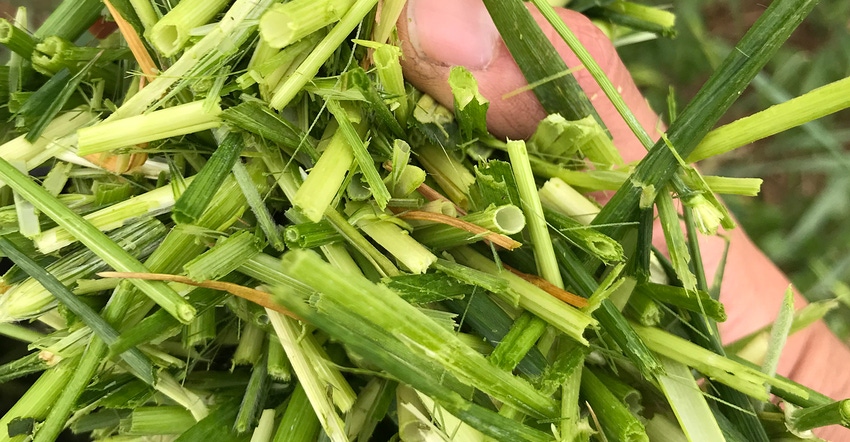June 25, 2018

By Liz Binversie
Due to increased scrutiny by the general public about farming’s effect on the environment, triticale and rye have been gaining renewed interest for their conservation benefits as cover crops. However, one of the main roadblocks preventing implementation of this practice is cost, but what if these were used as dual-purpose crops to provide cover during key runoff events and then harvested as forage for dairy cattle? Could the forage value offset the expenses?
This past year, University of Wisconsin-Extension set out to investigate through focus groups made up of farmers, nutritionists and agronomists, as well as conducting ongoing forage quality research. Here are a few key lessons we learned:
• Triticale and rye can give farms flexibility and options in their feeding program. This may be especially useful in drought years or at other times when feed inventory falls short as a “safety net” feed, bridging the gap until more feed is available. Farms can feed triticale and rye to heifers, dry or lactating cows, depending on the results of the feed analysis and the farm’s goals for yield and nutrient density.
• Triticale and rye can be part of a balanced ration. In our focus groups, rye and triticale forage was being fed to heifers, lactating and dry cows. Anecdotal evidence shows no negative effects on milk production but further research is required. Some farms were feeding one or two pounds of dry matter to lactating cows while others were feeding it as the primary ingredient in their heifer ration.
However, due to high potassium content, special consideration must be given to dry cow rations. It is important to work with your nutritionist when making any changes to the ration. We are currently evaluating the forage quality and feeding recommendations for rye and triticale, and more information will be published when it becomes available.
• Feed storage was a common issue. Some farms stored the forage with another feed, while others used bags or a smaller bunker silo if available. However, we consistently found that feed storage was an issue among all of the focus groups.
When asked, one of the farms placed a value of $125 per dry ton on their rye crop, while another chose not to harvest because they did not feel it was worth the expense for such a small yield. While this practice may not fit for every farm, it is certainly something to take into consideration when assessing your options and making decisions this year.
This research project was conducted by Liz Binversie, Brown County Extension agriculture educator; Heidi Johnson Dane County Extension crops and soils agent; Kevin Shelley UW-Madison nutrient and pest management outreach program manager; and Randy Shaver, UW-Madison/UW-Extension dairy nutrition specialist; with grant support from the Sustainable Agriculture Research and Education program. This column is provided by the UW-Extension Dairy Team.
You May Also Like




